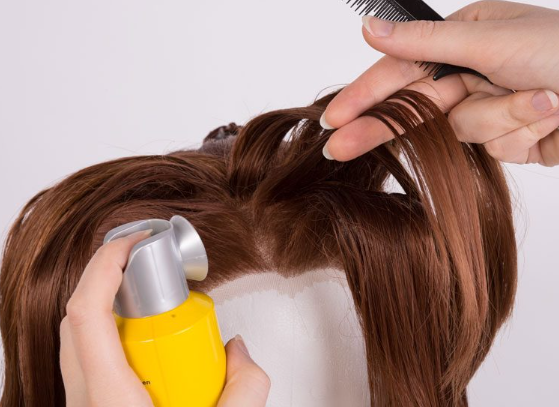
Techniques for Making Human Hair Wigs
Ventilating Individual Strands
Process:
Lace Caps: For lace front or full lace wigs, individual strands of human hair are ventilated (hand-tied) into a lace cap.
Skill: This process requires precision and skill to achieve a natural hairline and realistic scalp appearance.
Materials: High-quality lace is typically used for its breathability and ability to blend seamlessly with the skin.
Advantages:
Natural Look: Ventilating individual strands allows for realistic hair movement and parting, mimicking natural growth patterns.
Customization: Hair density, direction, and color can be customized for a personalized fit and style.
Comfort: Lace caps provide comfort and breathability, making them suitable for extended wear.
Sewing Wefts onto Traditional Wig Caps
Process:
Wefted Caps: Human hair wefts (bundles of hair sewn together at the top) are sewn onto traditional wig caps made of materials like netting or fabric.
Assembly: Wefts are strategically sewn in rows from the nape to the crown, ensuring even distribution and natural movement of hair.
Variants: Options include machine-sewn or hand-sewn wefted caps, each offering different levels of customization and durability.
Advantages:
Stability: Wefted caps provide structure and stability, securing the hair in place for daily wear.
Versatility: Allows for various styling options, including updos and braids, depending on the construction of the wig cap.
Cost-Effective: Machine-sewn wefts may offer a more affordable option while maintaining quality and longevity.
Precision in Pattern Cutting and Fitting
Pattern Cutting: Templates are used to create precise patterns that match the contours of the wearer�s head.
Fitting: Careful fitting ensures the wig sits comfortably and securely, with adjustments made to accommodate natural hairlines and head shapes.
Comfort and Natural Appearance:
Scalp Alignment: Aligning the wig�s scalp area with the wearer�s natural hairline ensures a seamless blend and realistic appearance.
Secure Fit: Proper fitting prevents slippage and discomfort, enhancing overall wearability and confidence.
Quality Assurance and Customization
Quality Materials: Selecting high-quality human hair ensures durability, natural texture, and color retention.
Customization Options: Offering choices in hair length, texture, color, and density allows for personalized wigs that meet individual preferences and style requirements.
Conclusion
Manufacturing human hair wigs for White hair involves employing advanced techniques such as ventilating individual strands into lace caps or sewing wefts onto traditional wig caps. Precision in pattern cutting and fitting ensures each wig sits naturally and comfortably on the wearer�s head, providing a realistic appearance and versatility in styling. By utilizing these techniques and prioritizing quality materials, wig makers can create customized wigs that enhance natural beauty and offer durability for long-term wear.